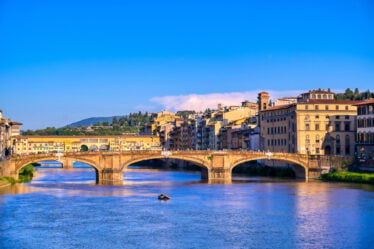

Today, we wanted to relate the story of, or recall a portion of, the Gran Hotel Baglioni, which was held by Prince Carrega de Lucedio in the nineteenth century. The Baglioni hotel’s lateral half is visible from Piazza dell’Unità Italiano to Via del Melarancio. At first sight, everything appears normal, but if you look closely, you can see a coat of arms at the top on the left. Nothing new can be seen here, so what? Examining the previously described heraldic coat of arms, we observe a cabinet with a finger close to the mouth, indicating that it is intended to contain a mouse trap.
The phrase “who does not rosic-referee” appears in the cartouche that encircles the peculiar coat of arms. This was only the dramatic academy’s catchphrase, “chi non risica non rosica” (who does not risk does not gain anything). He had selected this area for his theatrical productions between 1760 and 1879.
The Teatro della Piazza Vecchia (named after the Vecchia di S. Maria Novella piazza) was a tiny theater that held around eight hundred people. Giuseppe Conti provides an account of this theater in Florence’s past. “The theater in the old square was constructed almost entirely of puppets, and it was so tiny made with woods and a lot of filth.
The Beniamino dei Fiorentini, for his pleasant manner of reciting and saying jokes and frizzi cleanly, without the sguaiataggini of his other colleagues, did a good job of defining that it was a worthwhile risk to enter it. He laughed because of his spontaneity and his unusual and original motions. A true Careterist might be claimed to be more than Schierello, and the lords who sent you the youngsters on the previous carnival evenings, together with the instructors and rulers, were also going to hear him.
The Grand Duke sent you the small principles, and he was going to hear Ricci sometimes. The Grand Duke Pietro Leopoldo di Lorena placed the theater adorned with the royal emblems under his protection, much as it.The Saul of Vittorio Alfieri was read aloud in 1793. Luigi de Cambray Digny, an architect who was instrumental in preserving the monumental heritage of Tuscany, restored the building circa 1813–1814.
He held the position of director of the royal factories’ desk, which meant he was responsible for the upkeep, adaptation, and preservation of the enormous Grand Ducal factory complex. It was merged into the present structure in 1850, and in accordance with municipal regulations, it was suppressed in 1879. It is now an essential component of the Baglioni Grand Hotel.
If you want discover more about Florence and it s great history and tradition come with us, we are running a Free Walking Tour from Santa Maria Novella square, our Florence Free Walking Tour start in front of Minerva Hotel, pleas book in advance.



